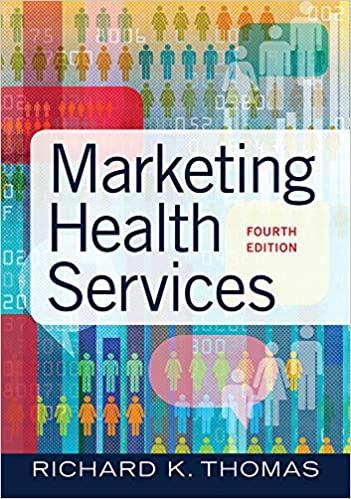Many companies have developed employee health management programs to control their healthcare costs and maintain a healthier,
Question:
Many companies have developed employee health management programs to control their healthcare costs and maintain a healthier, more productive workforce. They are encouraging employees to identify their health risks (by offering health risk assessments) and, when appropriate, to take actions to address those risks (by providing incentives to those who sign up for wellness classes, weight management programs, chronic disease management programs, etc.). The benefits of participating in employee health programs are well documented and improve not only the health of the employee but also the company’s bottom line.
Despite their known benefits, these programs have been challenging for employers to implement. First, employees often resist completing health risk assessments. Employers cannot mandate participation, so they offer incentives to do so—but even then, presentation rates for assessments are low. This resistance creates a problem because an assessment is typically required for placement in a wellness program. Second, and more significant, if health risks have been identified, many employees fail to commit to a wellness program. In the same way that incentives have little influence on participation in health risk assessments, incentives have a limited effect on the initiation and continued use of fitness, chronic disease management, and other health and wellness programs.
Many observers contend that an organization’s inability to generate the desired level of employee participation in internal health programs is a marketing problem. Many, if not most people, they argue, would be willing to undergo a health risk assessment if approached in an effective manner. Similarly, most people who realize they are at risk for a health problem would be willing to change their behavior under the right circumstances. Ultimately, the question is how to engage employees in a way that elicits the desired results. Heeding these facts, one company asked its marketing department to develop an approach to target groups of employees with messages that would resonate with them. The company believed that conveying the right message at the right time would go a long way toward engaging its workforce in its health improvement initiative.
Questions
1. Why do employers think it is beneficial to assess their employees’ health status and offer them health and wellness programs?
2. What factors prevent employees from reducing their health risks and taking steps to improve their health status?
3. What factors led the company to conclude that the ineffectiveness of the employee health program was a marketing issue?
4. Along what dimension(s) did the company marketers segment the employee population?
5. In what ways is this consumer engagement initiative an example of target marketing?
6. How was the effectiveness of this consumer engagement initiative evaluated?
Step by Step Answer:






